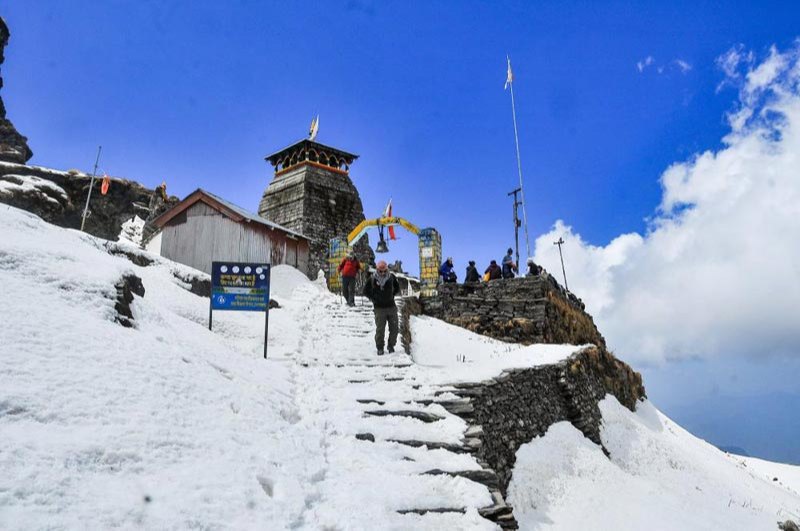Chopta Valley, often referred to as the “Mini Switzerland of India,” is a hidden gem nestled in the Garhwal region of Uttarakhand. Known for its serene beauty, lush green meadows, and towering Himalayan peaks, Chopta is a destination that attracts nature lovers, trekkers, and spiritual seekers alike.
Whether you’re looking for a peaceful retreat or an adventurous trekking experience, Chopta offers a little bit of everything. One of the most common questions travelers ask is, “What is the best time to visit Chopta Valley?” In this blog, we will explore the different seasons and help you plan your visit based on your interests, ensuring that the blog is SEO-friendly with the keyword Chopta Valley Best Time to Visit optimized for search engines.

Why Choose Chopta Valley?
Before diving into the best time to visit Chopta Valley, let’s first explore why this destination is so unique:
- Natural Beauty: Chopta offers breathtaking views of snow-clad Himalayan peaks such as Nanda Devi, Chaukhamba, and Trishul. The region is surrounded by lush forests of deodar, pine, and rhododendron.
- Adventure and Trekking: Chopta is the base for several famous treks, including the trek to Tungnath Temple and Chandrashila Peak. These treks offer stunning vistas and are accessible to both beginners and experienced trekkers.
- Spiritual Significance: Chopta is home to the Tungnath Temple Trek, the highest Shiva temple in the world, making it a significant pilgrimage site for Hindus.
- Wildlife: Chopta is part of the Kedarnath Wildlife Sanctuary, where you can spot rare species like the Musk Deer and the Himalayan Monal (Uttarakhand’s state bird).
Now that we know why Chopta Valley is such a special place, let’s explore the best times to visit based on your preferences.
Best Time to Visit Chopta Valley
The best time to visit Chopta Valley largely depends on what kind of experience you’re looking for—whether you want to enjoy lush green meadows, trek in the snow, or witness the vibrant blooming of flowers. Chopta offers different experiences in each season: summer, monsoon, and winter. Let’s explore each season in detail to help you decide on the best time to visit Chopta Valley.
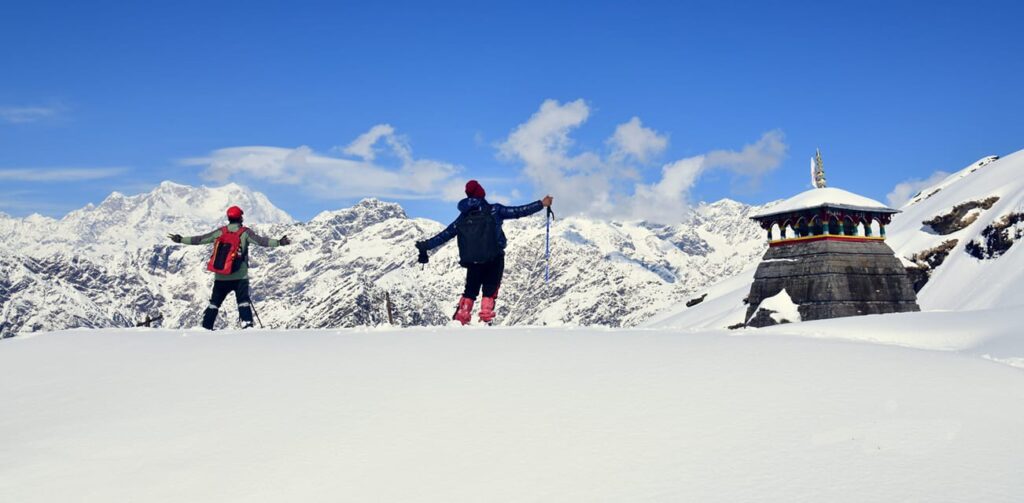
Summer (April to June): Best Time for Trekking and Sightseeing
Temperature: 10°C to 30°C
Weather: Pleasant and ideal for outdoor activities
Key Highlights: Trekking, camping, sightseeing, clear views of Himalayan peaks
The summer months, from April to June, are considered the best time to visit Chopta Valley for trekking and sightseeing. During this period, the snow from the winter has melted, revealing lush green meadows (locally known as Bugyals), blooming rhododendron flowers, and clear skies. The pleasant weather during summer makes it an ideal time for outdoor activities, including:
- Trekking to Tungnath Temple and Chandrashila Peak: These are the most popular treks in the region, and during summer, the trails are clear of snow, making it a great time for beginners and experienced trekkers alike.
- Camping in Chopta: Summer is the perfect season for camping under the stars. The clear skies and mild temperatures make for a comfortable and enjoyable camping experience.
- Wildlife Spotting: Since the region is part of the Kedarnath Wildlife Sanctuary, summer offers better chances of spotting wildlife, including rare bird species and animals like the musk deer.
If you’re planning a family vacation, summer is an excellent time to visit, as the weather is pleasant, and the treks are relatively easy to manage. It’s also the best time to visit Chopta Valley for those who want to avoid harsh weather conditions while still experiencing the beauty of the Himalayas.
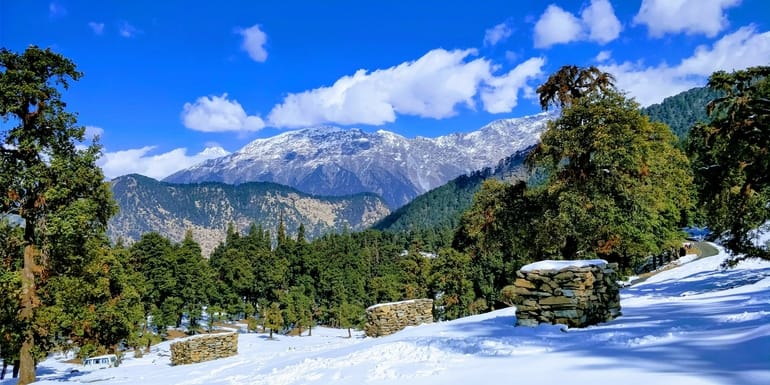
Monsoon (July to September): Best Time for Nature Lovers
Temperature: 12°C to 20°C
Weather: Heavy rainfall, vibrant greenery
Key Highlights: Lush landscapes, fewer tourists, ideal for nature photography
The monsoon season, from July to September, brings heavy rainfall to the region. While this might make trekking and outdoor activities challenging, the monsoon transforms Chopta into a verdant paradise. The rain brings the landscape to life, with the meadows turning an even deeper green and the waterfalls gushing with fresh water.
This season is perfect for:
- Nature Lovers and Photographers: If you love capturing the beauty of lush green landscapes, blooming flowers, and misty mountains, the monsoon is the best time to visit Chopta Valley. The region’s natural beauty is at its peak during this time.
- Fewer Crowds: Since the monsoon is considered an off-season for trekking, you’ll find fewer tourists in Chopta, allowing you to enjoy a more peaceful and serene experience.
However, monsoon also brings with it challenges like landslides and slippery trekking paths, so it may not be the best time for adventure enthusiasts. If you’re planning a trip during the monsoon, make sure to check the weather forecast regularly and be prepared for delays.

Winter (October to March): Best Time for Snow Lovers and Adventure Seekers
Temperature: -15°C to 10°C
Weather: Cold, heavy snowfall, snow-covered landscapes
Key Highlights: Snow trekking, skiing, snow camping, breathtaking winter landscapes
Winter in Chopta Valley, from October to March, transforms the entire region into a winter wonderland, making it the best time to visit Chopta Valley for snow lovers and adventure enthusiasts. The valley is blanketed in snow, and the Himalayan peaks stand tall in their full glory.
Key activities during winter include:
- Snow Trekking: The Chandrashila trek is extremely popular during winter, as trekkers enjoy the challenge of hiking through the snow. The views from the summit are even more stunning during this time, with snow-covered peaks stretching out as far as the eye can see.
- Skiing: Winter is also a great time to try out skiing in Chopta. While not as developed as other skiing destinations, Chopta’s snow-covered slopes offer an excellent opportunity for skiing enthusiasts.
- Snow Camping: For those who love winter camping, Chopta offers an unparalleled experience. Setting up camp amidst the snow, under a clear starry sky, is an unforgettable adventure.
While the winter season is breathtakingly beautiful, it is also the most challenging time to visit Chopta Valley. The temperature can drop to as low as -15°C, and the roads leading to Chopta may be blocked due to heavy snowfall. The Tungnath Temple remains closed during the winter months, but you can still visit the Chandrashila Peak for an exhilarating snow trek.
Winter is the best time to visit Chopta Valley for experienced trekkers and adventure enthusiasts who are well-prepared for the cold and snowy conditions. Make sure to pack plenty of warm clothing and necessary trekking gear if you plan to visit during this time.

Month-Wise Breakdown of Chopta Valley’s Seasons
January: Winter Wonderland
In January, Chopta is enveloped in a thick layer of snow, transforming the valley into a winter wonderland. The temperatures often drop to sub-zero levels, making it a perfect time for snow enthusiasts and adventure seekers.
Activities:
- Snow Trekking: The trails are ideal for trekking with the right gear, attracting adventure lovers.
- Photography: The snow-covered landscapes create picturesque settings, perfect for photography.
Tips:
- Carry heavy winter clothing, snow boots, and trekking gear.
- Be cautious of icy trails.
February: Snowy Serenity
February continues the winter charm, with temperatures gradually rising but still cold. The snow starts to melt towards the end of the month, making it an ideal time for those who enjoy serene winter landscapes without extreme cold.
Activities:
- Wildlife Spotting: You may catch glimpses of wildlife, including Himalayan black bears, as they emerge from hibernation.
- Local Festivals: Participate in local festivals, such as Mahashivaratri, celebrated with fervor.
Tips:
- Keep an eye on weather updates, as conditions can change rapidly.
- Enjoy local cuisine at small eateries.
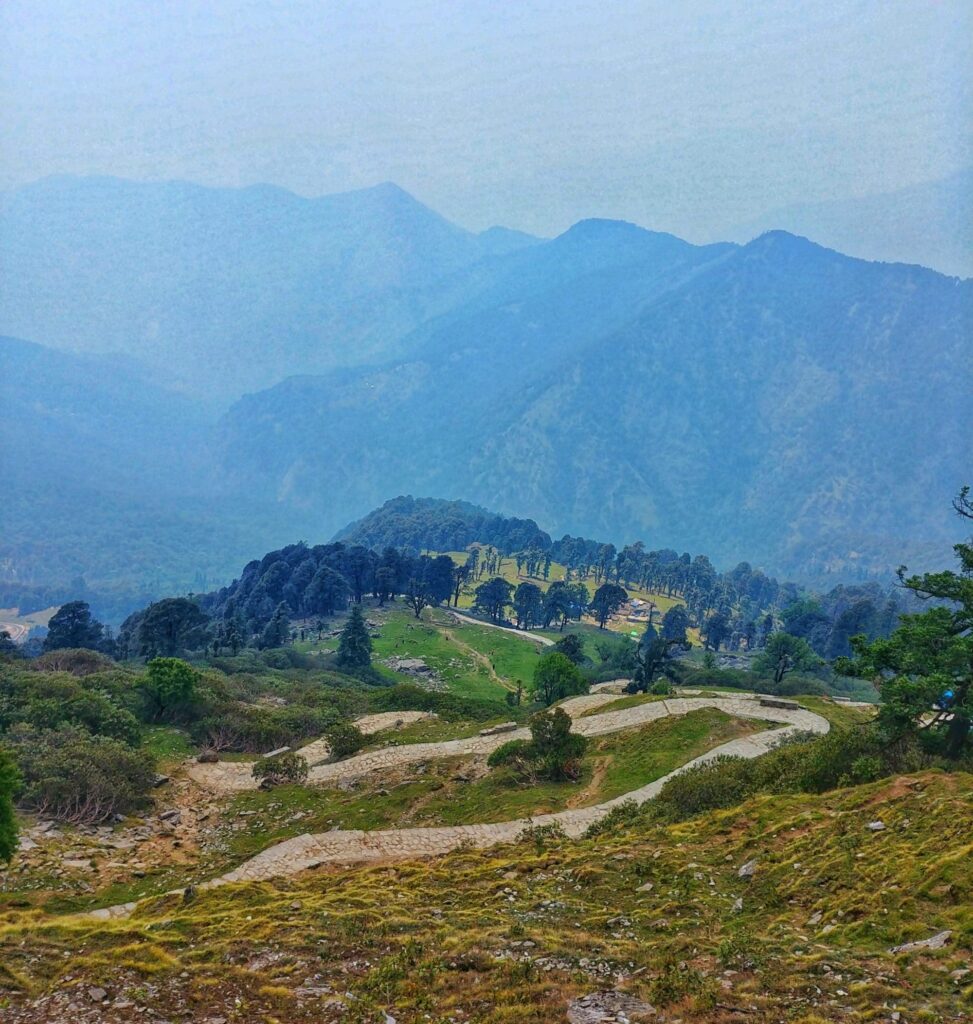
March: The Thaw Begins
As March arrives, Chopta starts transitioning into spring. The days become warmer, and the snow begins to melt, revealing lush green patches and blooming flowers.
Activities:
- Trekking: Ideal for moderate treks like Tungnath and Chandrashila, as the trails become accessible.
- Flora Exploration: Witness a variety of wildflowers, including rhododendrons, in full bloom.
Tips:
- Dress in layers, as mornings can be chilly while afternoons warm up.
- Bring a camera to capture the vibrant landscapes.
April: Spring Awakening
April marks the peak of spring in Chopta Valley. The temperatures are pleasant, ranging from 10°C to 20°C, making it perfect for outdoor activities.
Activities:
- Camping: Ideal weather for camping under the stars.
- Birdwatching: Spot migratory birds returning to the region.
Tips:
- Book accommodations in advance, as this is a popular time for tourists.
- Carry hydration packs and snacks for treks.
May: Ideal Weather
May is one of the best months to visit Chopta, with warm days and cool nights. The valley is lush and green, providing a picturesque backdrop for various activities.
Activities:
- Trekking: Enjoy treks to Tungnath and other nearby peaks.
- Photography: Capture the vibrant green landscapes against the backdrop of snow-capped peaks.
Tips:
- Wear breathable clothing for comfort during hikes.
- Consider guided tours for a richer experience.
June: Pre-Monsoon Warmth
June in Chopta sees the beginning of the monsoon season, though early June remains pleasant. The weather can be unpredictable, with occasional showers.
Activities:
- Adventure Sports: Activities like rock climbing and rappelling become popular before the rains intensify.
- Nature Walks: Explore the lush greenery and enjoy the fragrance of wet earth.
Tips:
- Carry waterproof gear, as rain can occur unexpectedly.
- Stay updated on weather forecasts.

July: Monsoon Magic
July marks the peak of the monsoon season in Chopta. The valley transforms into a lush green paradise, with heavy rainfall creating stunning waterfalls.
Activities:
- Nature Photography: Capture the beauty of blooming flora and flowing streams.
- Quiet Retreat: Enjoy the serene atmosphere as crowds thin out during the rains.
Tips:
- Ensure good waterproof gear and sturdy footwear.
- Avoid trekking during heavy rain for safety.
August: Monsoon Continues
August continues the monsoon magic, with lush greenery and rejuvenated landscapes. However, the rainfall can be heavy at times.
Activities:
- Trekking: While some trails may be muddy, adventurous trekkers can explore less-traveled paths.
- Wildlife Observation: The monsoon brings various species of birds and insects.
Tips:
- Stay in well-constructed accommodations that can withstand heavy rain.
- Keep emergency supplies handy.
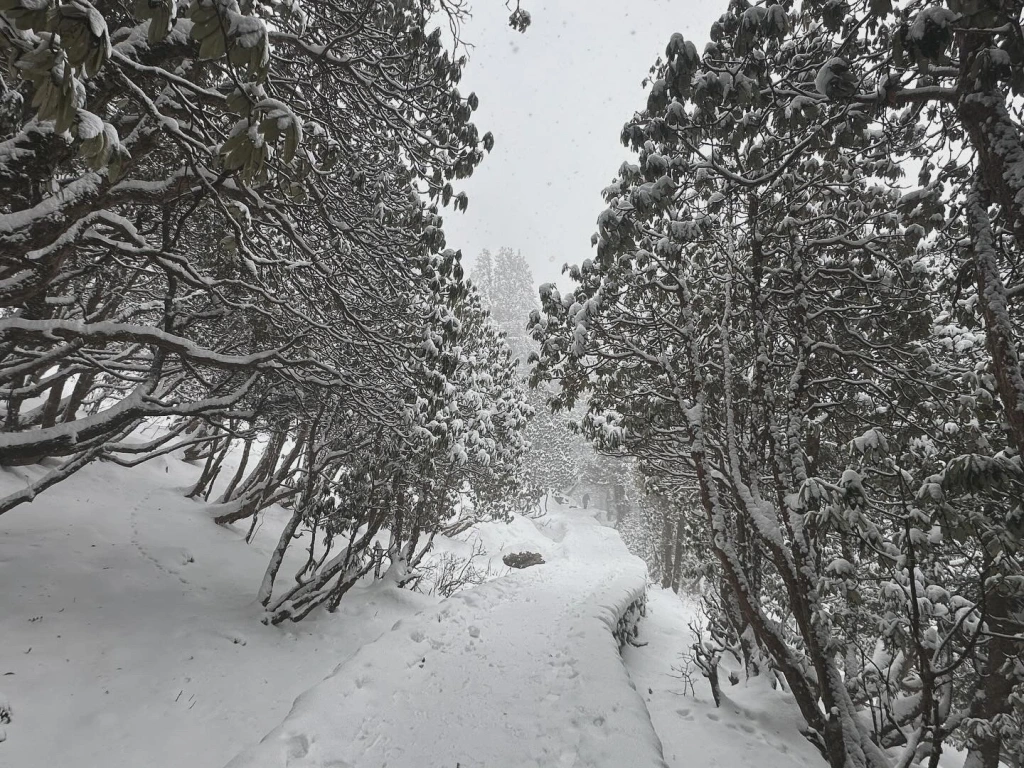
September: Monsoon Retreat
As the monsoon begins to wane in September, the weather becomes more stable. The valley is fresh and vibrant, with clear skies returning.
Activities:
- Trekking: Perfect time to enjoy trekking without the monsoon’s challenges.
- Local Culture: Experience local festivals, such as Gudi Padwa.
Tips:
- Carry insect repellent, as mosquitoes may still be present.
- Enjoy local cuisine, as many seasonal dishes are prepared.
October: Autumn Bliss
October ushers in autumn in Chopta, characterized by clear skies and crisp air. The weather is pleasant, making it an ideal time for exploration.
Activities:
- Trekking: Trekking routes are clear, and views of the snow-capped peaks are spectacular.
- Camping: Experience camping with clear nights perfect for stargazing.
Tips:
- Dress in layers to adapt to temperature changes.
- Bring a warm sleeping bag if camping.
November: Chill in the Air
November marks the onset of winter, with temperatures beginning to drop significantly. The valley becomes quieter as fewer tourists visit.
Activities:
- Photography: Capture the beautiful landscapes as they prepare for winter.
- Trekking: Suitable for those who enjoy less crowded trails.
Tips:
- Prepare for cold nights; warm clothing is essential.
- Check for road conditions, as early snowfall may occur.
December: Winter’s Embrace
December in Chopta brings the full embrace of winter. The valley may be covered in snow, creating a magical landscape.
Activities:
- Snow Trekking: Ideal for trekking and enjoying the winter scenery.
- Festive Celebrations: Experience local celebrations and winter festivals.
Tips:
- Ensure you have winter gear and snow boots.
- Stay informed about weather conditions and road accessibility.
How to Reach Chopta Valley
Now that you know the best time to visit Chopta Valley, here’s how to get there:
1. By Air
The nearest airport to Chopta is the Jolly Grant Airport in Dehradun, located about 221 km away. From the airport, you can hire a taxi or take a bus to Chopta.
2. By Train
The nearest railway stations are Haridwar and Rishikesh, approximately 200 km from Chopta. From these stations, you can take a taxi or board a bus to reach Chopta.
3. By Road
Chopta is well-connected by road to major cities like Delhi, Haridwar, and Rishikesh. You can either drive yourself or book a cab or bus from these cities.
Packing Tips for Your Trip to Chopta Valley
- Warm Clothing: Even during summer, the nights in Chopta can be chilly. In winter, you’ll need heavy woolens, thermal wear, and snow boots.
- Trekking Gear: If you plan to trek, make sure to pack sturdy trekking shoes, a walking stick, and a backpack.
- Sunscreen and Sunglasses: The high altitude means stronger UV rays, so it’s essential to protect your skin and eyes.
- First-Aid Kit
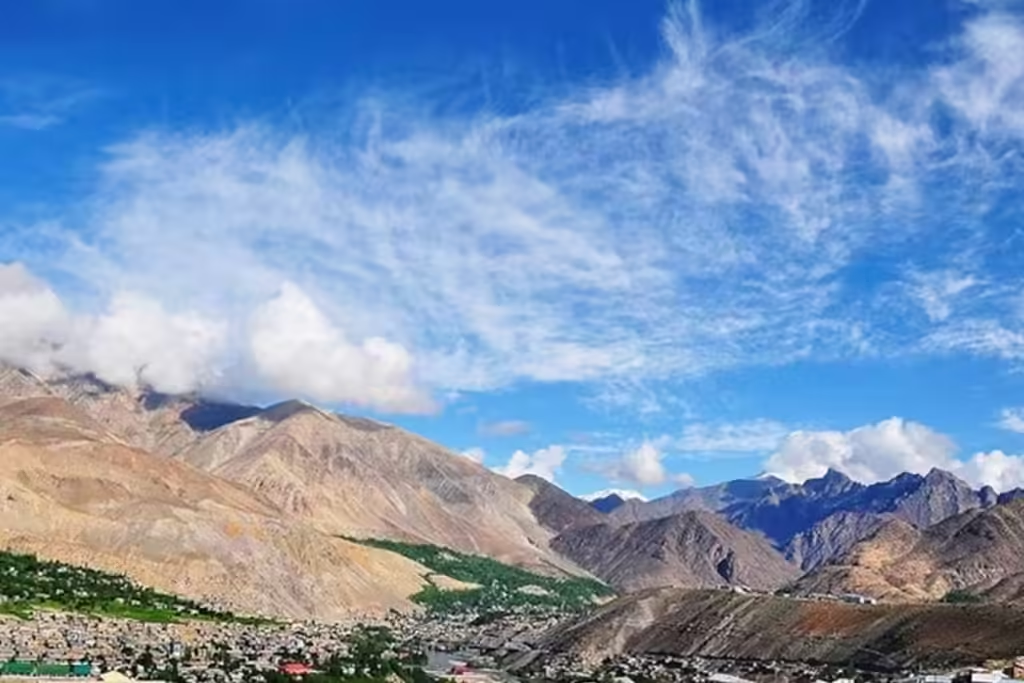
Conclusion
Chopta Valley is a destination that offers something for every kind of traveler, whether you’re an adventure enthusiast, a nature lover, or a spiritual seeker. With its breathtaking landscapes, serene environment, and opportunities for trekking and exploration, Chopta is truly a hidden gem in the Himalayas. The best time to visit Chopta Valley depends on the experience you’re looking for—whether it’s the pleasant trekking conditions of summer, the lush greenery of the monsoon, or the snowy adventure of winter.
Summer provides clear skies and comfortable weather for trekking, while winter offers the magical experience of snow-covered trails and mountain views. For photographers and nature lovers, the monsoon is a time when Chopta bursts into vibrant life, offering peace and solitude.
Whenever you choose to visit, Chopta Tour Package promises a memorable experience filled with natural beauty, adventure, and tranquility. Pack your bags and get ready to explore one of Uttarakhand’s most picturesque destinations!

